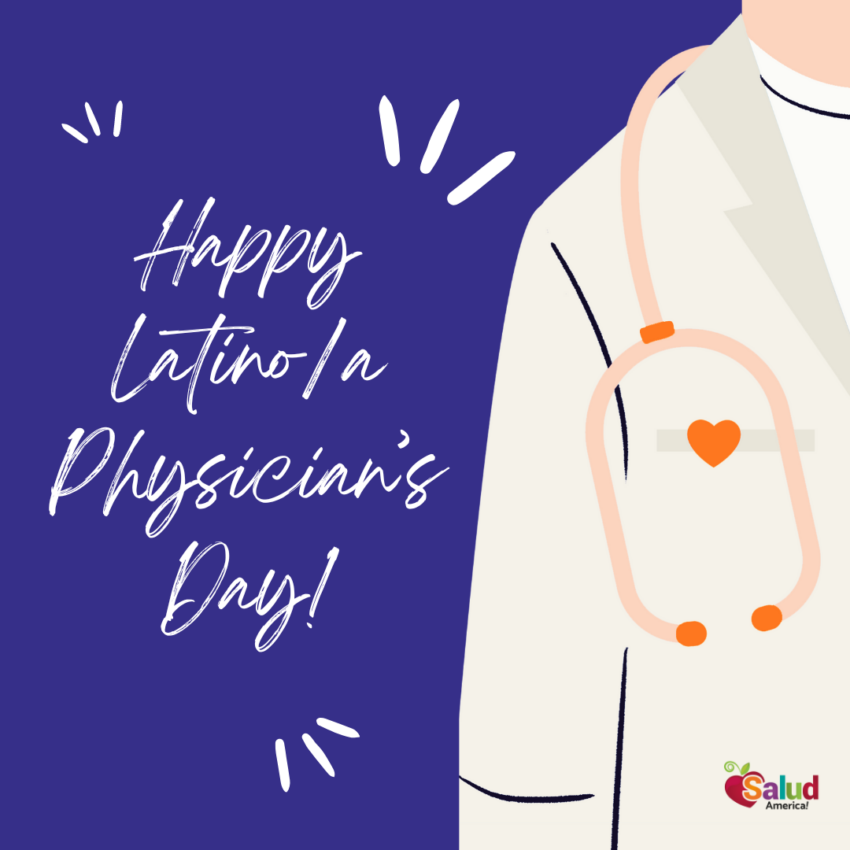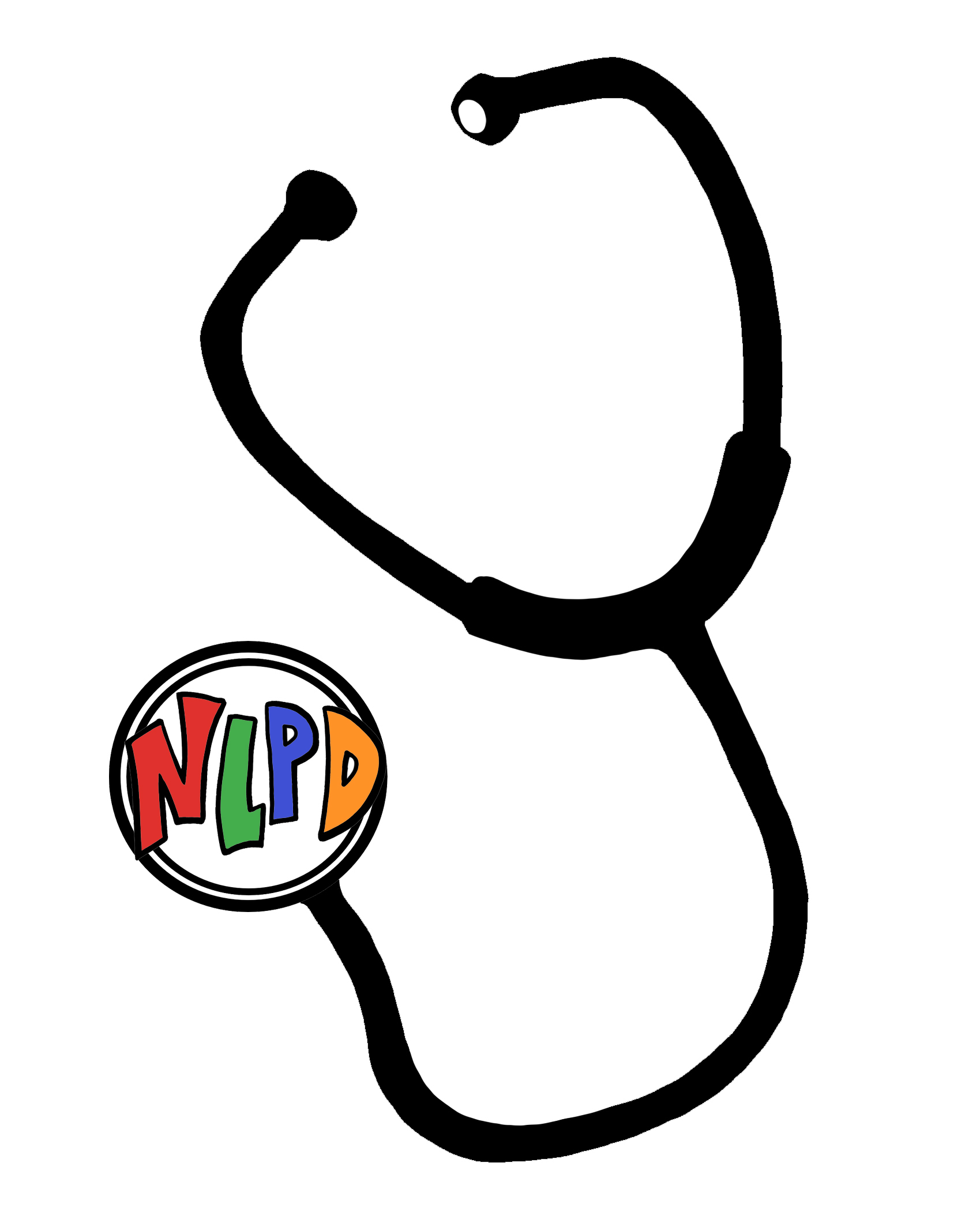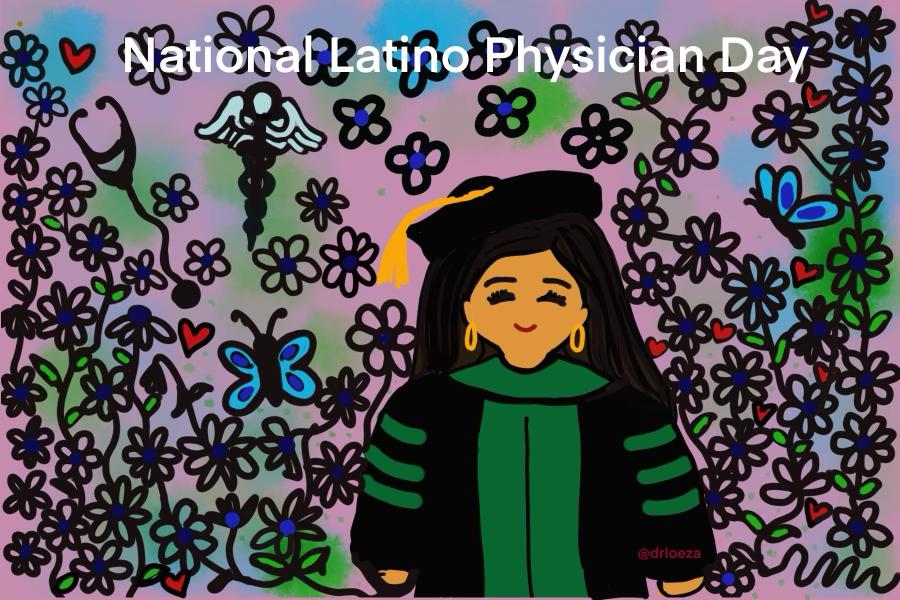
Share On Social!
Latinos make up more than 19% of the total US population, but account for only 6% of US physicians.
In fact, less than one in four Latino adults report sharing a racial, ethnic, or language background with their physician.
This lack of Latino representation in medicine negatively affects Latino patient health.
For example, studies show that a lack of diversity in healthcare workers contributes to heath inequities, such as higher rates of maternal health issues in Latinas and worse health outcomes for Latino cancer patients, compared to their white counterparts.
Additionally, a lack of Latino representation in healthcare adds additional barriers for Latino patients to obtain culturally and linguistically concordant care.
In response to this critical shortage of Latino physicians, Drs. Michael Galvez and Cesar Padilla are leading a grassroots initiative to annually celebrate Oct. 1 as National Latino/a Physician’s Day.
2023 is the second year that the duo is leading this movement with endorsement of national non-profit organizations and medical societies, including Salud America! at UT Health San Antonio.

Padilla, an obstetric anesthesiologist at Stanford Hospital and Clinics, stressed the need for diverse physicians amid a rapidly changing nation.
“In California, 48% of births are to Latina patients. As an OB anesthesiologist, being able to ease fears about anesthesia in Spanish-speaking patients is critical. 48% deserves more than 6%. The Latino physician shortage is a crisis,” wrote Padilla on Twitter.
“We appreciate all the societies, hospitals, institutions, etc. that are highlighting and supporting Latinos with their own time and resources. The sponsorship has been incredible. So awesome to see all the support for this movement that the Latino community needs. ¡Necesitamos más!” added Galvez of Valley Children’s Healthcare in Madera, Calif., on Twitter.
Support the movement to celebrate National Latino/a Physician’s Day on October 1, 2023!
Why is There a Lack of Latino Physicians?
Latinos are at a disadvantage when it comes to the education and training required to become a physician.

Latinos face more obstacles on the path to becoming a physician than their white counterparts.
These disadvantages begin with generations of Latinos facing an array of inequities, such as systemic racism, discrimination, lack of financial resources, and ability to afford basic needs like food and housing.
These inequities increase Latino barriers to quality education as early as kindergarten.
At the college level, Latinos are far less likely than their white peers to complete their degree, and more likely to still be enrolled beyond six years on their path to a degree.
Lower college graduation rates among Latinos can partially be attributed to a lack of Latinos in higher education, similar to the underrepresentation of Latino physicians.
So, it’s not just a diversity and inclusion problem.
What Can Be Done to Increase the Number of Latino Physicians?
Luckily, there are programs like the Alliance of Hispanic Serving Research Universities and Éxito! Latino Cancer Research Leadership Training, led by Salud America! director Dr. Amelie G. Ramirez of UT Health San Antonio, that are helping more Latinos succeed in higher education and break down the barriers to becoming a physician.
You can support Latino higher education, too.
Select your county and get a Health Equity Report Card by Salud America! at UT Health San Antonio.
In your report card, you will see maps, data, and gauges to compare health equity issues, including education levels, to the rest of your state and nation.
You can email your Health Equity Report Card to local leaders to stimulate community change. Use the data in your materials or share on social media to raise awareness.
Get your Health Equity Report Card!
What Can Be Done to Increase Compassion for Latino Patients?

Some doctors have implicit, subconscious preferences for white patients over those of color, studies show. This is implicit bias.
These biases — stereotypes that affect our understanding and decisions about others beyond our conscious control — lead to discrimination and health disparities.
Fortunately, implicit bias can be “rewired” for compassion for patients of color.
Download the free Salud America! Action Pack “Health Care Workers and Researchers: Find If You Have Implicit Bias and What to Do Next.”
“This Action Pack will help you see if you have implicit bias, learn from others who have overcome their own implicit bias, and encourage colleagues to learn about implicit bias, too,” Dr. Ramirez said.
Explore More:
Health EquityBy The Numbers
1
out of 10
Pedestrians survive when hit by a car at 40 MPH



